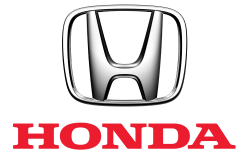The Japan automotive electrically-powered hydraulic steering market size is expected to expand at significant CAGR during forecast period 2021–2028. Growth of the market is attributed to rapid development in power steering, increase in tire diameter and width, and high consumer demand for fully equipped vehicles.
Electrically-powered hydraulic steering is an extension of the hydraulic power steering. The major change is how the hydraulic pump that provides the pressure necessary for the power steering to driven. In electro-hydraulic power steering system, an electric motor drives the pump, controlled according to the necessary assisting steering force. At slow speeds and when the vehicle is stationary, the supply of the hydraulic pump is augmented to supply a major volume of steering power. At high speeds, the pump revolving speed is reduced because assistance is not required.

The Covid-19 pandemic affected the demand and supply of Japan automotive electrically-powered hydraulic steering market. Lockdown across the globe, supply chain disorders, and oscillating supply of raw materials forced manufacturers to shut down production leading to unfortunate decline in market growth. Launch of vaccines to combat the COVID-19 pandemic is expected to contribute to the market growth over the forecast period.
Market Trends, Drivers, Restraints, and Opportunities
- Rise in demand for fuel efficient vehicles is projected to boost the market in the coming years.
- Rapid development in automotive electric power steering is major factor fuelling the market during the forecast period.
- High cost of the products is anticipated to hamper market growth.
- Rapid growth in autonomous cars is projected to hamper the market growth in the coming years.
- R&D investment and technological advancement in automotive electrically-powered hydraulic steering sector is projected to create lucrative opportunities for the market players.
Scope of Automotive Electrically Powered Hydraulic Steering Market Report
The report on the Japan automotive electrically-powered hydraulic steering market includes an assessment of the market, trends, segments, and regional markets. Overview and dynamics have also been included in the report.
|
Attributes
|
Details
|
|
Report Title
|
Automotive Electrically-Powered Hydraulic Steering Market – Japan Industry Analysis, Growth, Share, Size, Trends, and Forecast
|
|
Base Year
|
2020
|
|
Historic Data
|
2018-2019
|
|
Forecast Period
|
2021-2028
|
|
Segmentation
|
Vehicle Types [Commercial Vehicles and Passenger Vehicles], and Component Types [Sensors, Steering Motor, and Others]
|
|
Geographical Scope
|
Japan
|
|
Report Coverage
|
Company Share, Market Analysis and Size, Competitive Landscape, Growth Factors, and Trends, and Revenue Forecast
|
|
Key Players covered in the Report
|
Mando Corporation, Continental AG, Showa Group, Robert Bosch GmbH, Nexteer Automotive Group Ltd, JTEKT Corporation, NSK Ltd, ZF Friedrichshafen AG, Danfoss, and Thyssenkrupp Presta AG
|
Japan Automotive Electrically Powered Hydraulic Steering Market Segment Insights
The passenger vehicles segment accounts for key share of the market
Based on vehicle types, the Japan automotive electrically-powered hydraulic steering market is bifurcated into commercial vehicles and passenger vehicles. The passenger vehicles segment accounts for a key share of the market. Growth of the market is attributed to rapidly increasing population, improvement in steering sensors technology, and increasing per capita income. The commercial vehicles segment is anticipated to expand at a rapid pace during the forecast period due to factors such as rise in vehicle production, growing demand for advanced safety and convenience vehicles, and rise in car loans due to low interest rates.

The steering motor segment accounts for major share of the market
Based on automations, the Japan automotive electrically-powered hydraulic steering market is fragmented into sensors, steering motor, and others. The steering motor segment accounts for a major share of the market. Growth of the market is attributed to presence of major automotive players in the region, increased spending on luxury cars, and rapid development in road networks. The sensors are anticipated to expand at a rapid pace during the forecast period due to factors such as rise in cost of revolutionary system, increasing usage of hydraulic power steering in commercial vehicles, and increased production of automobiles.

Automotive Electrically Powered Hydraulic Steering Market Geographical Outlook
Japan automotive electrically-powered hydraulic steering market is expected to grow at a significant CAGR. Increasing adoption of electric power steering in passenger cars and commercial vehicles is major factor driving the market during the forecast period. Variable ratio steering alternates the co-ordination between the driver’s movements.
The vehicle production has growing up significantly in Japan owing to increase in the vehicle production. Due to low production costs the Japan automotive electrically-powered hydraulic steering market is projected to expand in the coming years.
Segments
The Japan automotive electrically-powered hydraulic steering market has been segmented on the basis of
Vehicle Types
- Commercial Vehicles
- Passenger Vehicles
Component Types
- Sensors
- Steering Motor
- Others
Geography
Key Players
- Mando Corporation
- Continental AG
- Showa Group
- Robert Bosch GmbH
- Nexteer Automotive Group Ltd
- JTEKT Corporation
- NSK Ltd
- ZF Friedrichshafen AG
- Danfoss
- Thyssenkrupp Presta AG
Competitive Landscape
Key players competing in the Japan automotive electrically-powered hydraulic steering market include Mando Corporation, Continental AG, Showa Group, Robert Bosch GmbH, Nexteer Automotive Group Ltd, JTEKT Corporation, NSK Ltd, ZF Friedrichshafen AG, Danfoss, and Thyssenkrupp Presta AG
Some of these players are using several market strategies such as acquisitions, merger, collaborations, partnerships, capacity expansion, and product launches to enhance their market shares and raise their production line of the business in the coming years.


























